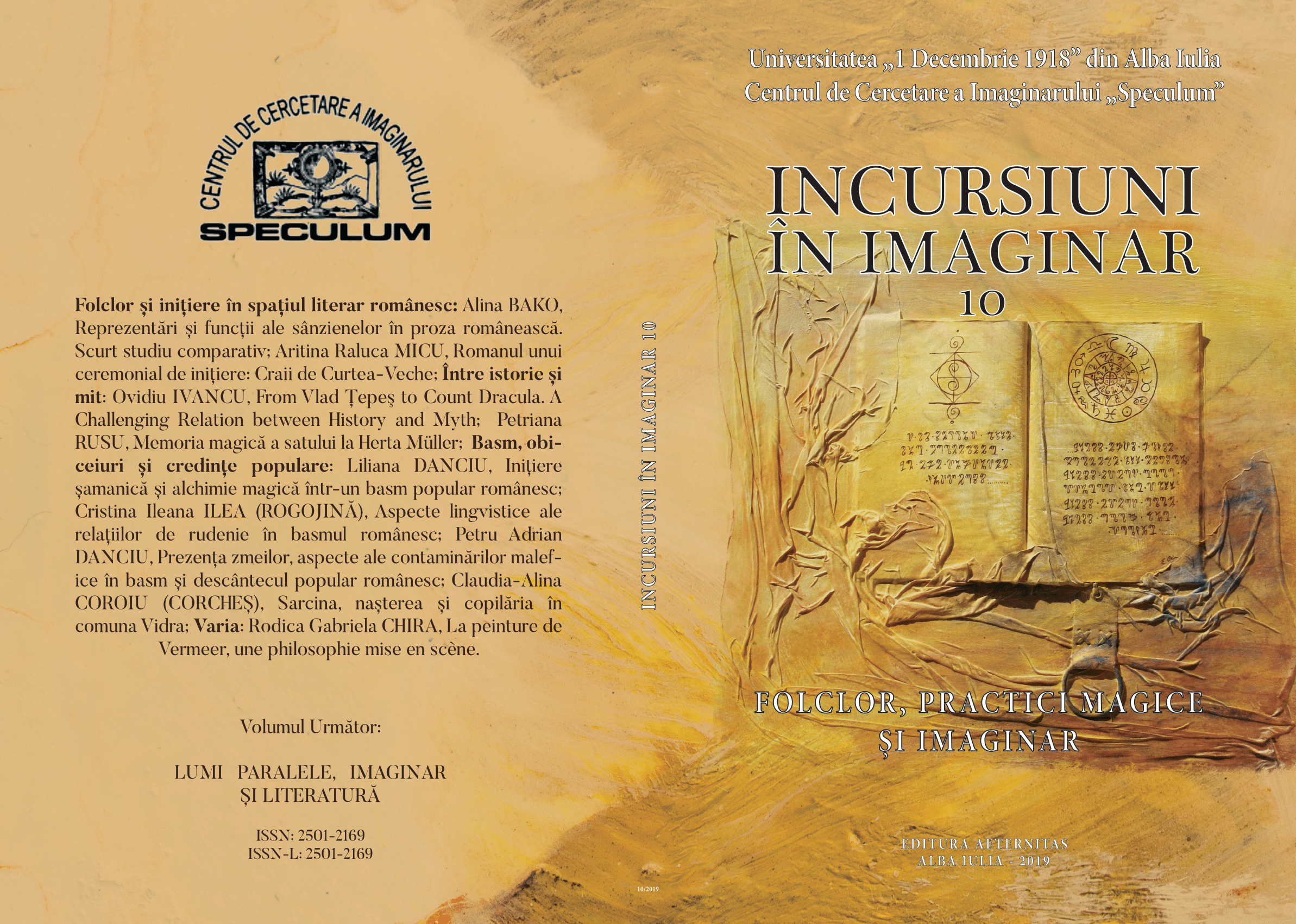Inițiere șamanică și alchimie magică într-un basm popular românesc
SHAMANIC INITIATION AND MAGICAL ALCHEMY IN A ROMANIAN FOLK TALE
Author(s): Liliana DanciuSubject(s): Language and Literature Studies, Studies of Literature
Published by: Editura Aeternitas
Keywords: alchemy; initiation; shamanism; popular fairy tale; unity;
Summary/Abstract: As a species of folk literature, the Romanian fairy tale is a narrative writing with a recuperating character of the archaic background of magical-religious beliefs and pre-Christian rites. The soteriological function specific to the "saying" of the myth on the occasion of sacred feasts or critical moments in the existence of the community seems to have been transferred to the act of telling a story. Stories were told on different occasions of ritual moments, such as wedding, cunning or funeral, and the storyteller was always initiated in the mystery of the world and a well-known magician of rituals and practices. I consider that, like the popular singers, the storytellers were called to entertain a particular audience with their tales which also had a "didactic" function. The stories were built from fixed narrative cores taken from the ritual skeleton of the fundamental founding myth, around which variable elements, more or less refined, were chained together in accordance with the creative intelligence of the creator. Thus, the popular fairy tale ”Ţugunea, fiul mătușii”, the version found by G. Dem. Teodorescu, is based on the specific stages of a foundation myth, which is followed by the phases of a double rite of passage, the one in the men's category and the other one in the shamanic type. These aspects can also be identified in Petre Ispirescuʼs version, entitled ”Tugulea, fiul uncheașului și al mătușii”. The novelty of the version of G. Dem. Teodorescu consists in the possibility of identifying the specific moments of a double ritual, magical and alchemical. In the first place, the Initiate, the Chosen one, discovers and frees from the darkness of the deep earth-alembic the Philosophical Stone, the superb autochthon-nous coincidentia oppositorum, suggestively represented by the image of the Fantastic Horse with the Sun in front and the Moon in the back. In the terrestrial world, Țugulea is the sacred hypostasis of the aunt's son (the midwife of the village named "meşteroaia" by Mircea Eliade), his birth being under the sign of the ambivalence of the female element, so that in the underground world his "rebirth" is supervised by the feared Goddess of the Earth, Zmeoaica Pământului. Secondly, but equally important, the hero manages to go through all the stages of the alchemical "baking" (to be understood, of self-maturity) in the earth-alembic (nigredo, albedo, citrinitas, rubedo), respectively the four alchemical operations (decay, calcination, distillation, sublimation) and succeeds in the annulment of human duality and the achievement of the Total Unity through a double hierogamy. The wedding of the hero with the daughter of the emperor symbolizes the alchemical union of the King and the Queen, which, in Jungʼs psychology, translates into the union of animus with anima, of consciousness with the unconscious. The hero also succeeds in uniting the worlds, the Kingdom from Above with the Kingdom of Beyond, in an atypical coincidentia oppositorum to the recent Romanian folk tale, but specific to the archaic one, unaffected by the Christian moral and dogma.
Journal: Incursiuni în imaginar
- Issue Year: 1/2019
- Issue No: 10
- Page Range: 69-89
- Page Count: 21
- Language: Romanian

